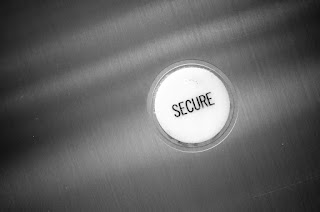How 5G Technology Improves Healthcare System
What comes to your mind when you think of the term 5G? I know you might think about faster internet or better connectivity in the office. Or perhaps you would think about a specific use case which you saw online. But beyond that, a true power of 5G technology is being harnessed in a sector that touches the very essence of human life, that is, healthcare.
Today in this post I want to share with you the top five ways in which 5G-enabled technologies are helping healthcare providers and professionals to change the trajectory of patient care for the better.
1. More Connected Devices in Hospital
The first one is more connected devices in hospitals. the Internet of Medical Things (IoMT) devices and the wearables, are now collecting vast amounts of data, enabling patients' information to be transmitted consistently across the wireless networks, and facilitating these timely interventions during these critical moments.
Now the rise of the electronic ICUs, the intensive care units and the tele ICUs, showcase the significance of the internet of medical things in the hospital's environments as they enhanced monitoring capabilities. They have led to this measurable reduction in serious medical events. Our report published by one of our representatives, showed the relevance of 5G has on the successful deployment and implementation of the Internet of Medical Things devices.
Devices has wearables, such as heart and glucose monitors, they require this high frequency updates of the central data repository, and only 5G networks can provide this required reliability while connecting this large number of this type of devices.
2. Advanced Demand Forecasting
The second way of 5G is enabling better healthcare is in the advanced demand forecasting. By leveraging the power of predictive analytics built on this artificial intelligence and machine learning, healthcare organizations, can better anticipate the demand.
This involves for example analyzing historical data and real-time insights from various departments and supply chains to optimize staffing schedules and resource allocation. With 5G enhanced bandwidth and capacity, these modern, technology-driven approaches to patient care, to staff management, and to resource utilization, they can transmit accurate and secure data promptly, and they ensure this efficient and effective care delivery.
3. Faster Mobile Unit and Vehicle
The third way in which 5G is enabling better healthcare is through faster mobile units and vehicles. Now, mobile units are fortified with 5G medical technology, they are now able to provide these timely interventions to the patients as they are quicker than the conventional ambulatory and emergency rooms interventions. And additionally, these 5G-equipped smart ambulances are also integrated with sensors, with medical devices not only with software. They are emerging as the next step in this emergency operations.
Now, these ambulances allow the paramedics to apply this high definition video with VR headsets, and for example, with haptic gloves granting remote clinicals, more control over their onsite procedures.
4. Accessible Telehealth and Patients Portal
Now let's go to number 4th way on how 5G is improving healthcare system through accessible telehealth and patient portals. Now with more than 27% of the Nigerian adults having multiple chronicle conditions, the need for more accessible and efficient patient-doctor interactions has been more critical than ever before. and 5G's expensive coverage is facilitating this sustained and valuable patient-doctor interactions.
The patients who have experienced telehealth for the first time, for example, during the pandemic, they have shown increased engagement in other virtual care forms as well, such as digital health monitoring, but also at-home testing. This is primarily due to the convenience and the patient-centric experience that it offers.
5. Streamline Care with Autonomous Machines
Lastly, streamlined care with autonomous machines is improving the healthcare industry. In the middle of the COVID-19 pandemic, there were technological advancements that leveraged 5G, such as, for example, these autonomous drones, which are designed to disinfect public spaces, but also robots that could deliver essential supplies to pharmacies and directly to the patient's homes. Now these innovations, they not only reduce the human error, but they also allow healthcare professionals to concentrate on more critical tasks.
Here we come to the end of this post I hope you have gained something, stay tuned with Blueguard for more exciting and informative tech posts.




Comments
Post a Comment